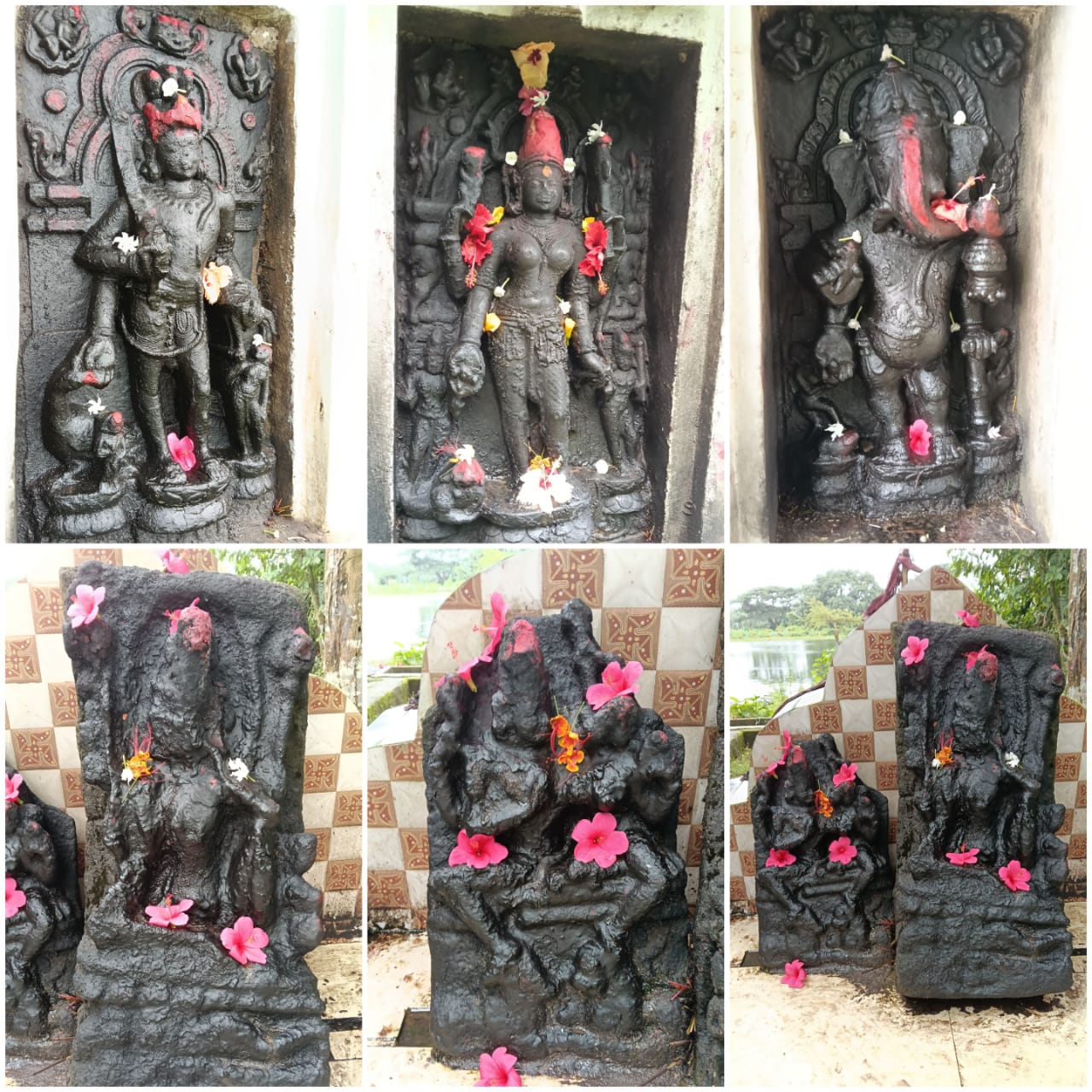Jagatsinghpur: On the occasion of the birth of the holy Bhagabat and Indu Purnima, the eighth edition of “Jagatsinghpur Heritage Walk” (JHW) was conducted at Ishaneshwar Mahadev Temple, one of the iconic monuments of the region, in Kostimallikapur village under Tirtol block, last Sunday, with 22 enthusiasts scanning through the pages of its history.
According to historians and archaeologists the shrine, contemporary of the Sharala Peetha or Maa Sharala shrine, was destroyed on multiple occasions by the Muslim invaders in the past. It was learnt that during the reign of Mukunda Dev, the last independent Gajapati of Odisha, Kalapahad, the commander of the Nawab of Bengal, Sultan Sulaiman Karrani, invaded Odisha and he demolished hundreds of temples in the present-day Cuttack, Jagatsinghpur, Puri, Kendrapara and Jajpur areas and broke their idols. At that time, the very old temple of Devi Sharala was also broken by Kalapahad, which later completely merged with the land during the reign of Aurangzeb. The Ishaneswar Temple also fell victim to such attacks.
It is believed that the restoration work of the ancient Ishaneshwar temple was done during the rule of Gajapati Kapilendra Dev. It was again destroyed by Kalapahad and all the idols were broken. There is a stone inscription of Kapilendra Dev at the entrance of this temple. The temple, built in the Rekha style, has a Swayambhu Shiva Linga carved into it. The Shiva Linga can be touched about two feet below, as the priest says.
The Jagamohan in front of the Garbhagriha or the plane was broken in a strong wind. Later, a roof was built by the State Archaeological Department.The side deities of the temple are Kartikeya to the west, Goddess Parvati to the south and Ganesha to the north.
There is no doubt that this is a complex was full of olds shrines as there are statues of Bhairava and Astikajratkaru at the entrance of the temple. Bhairava, who is wearing a crown of thorns and a human head, holds a drawn sword in his right hand, while he holds a drinking vessel in his left hand. There is also a statue of Astikajratkaru in a sitting posture, and his companions are sitting at his feet in praising postures. This statue is called Yogi Yogiani by the worshipers.
In addition, there is a statue of Chamunda in the south courtyard of the temple, which is called Charchikai. This statue is standing on a corpse and holds a sword, a cup, a severed head and a lotus. His tongue is sticking out like a lotus. To the left of this statue is also a complete statue of Hara Parvati. It is difficult to estimate the age of these ancient statues. The temple’s priest Shankar Panda and his elder brother Shiva Panda provided a lot of information about the temple’s worship methods, rituals and the folklore related to the Kashia-Kapila legend associated with Gajapati Kapilendra Dev. Srikant Singh, the convenor of “Jagatsinghpur Heritage Walks “initiated the discussion by introducing heritage walkers to each other and briefing about the temple.
On the occasion of the lunar eclipse, the visitors were able to see elaborate rituals of the puja offered to the deities . Prominent among them, who were present include Hemanta Kumar Nayak, historian Kailash Pradhan and Nishant Singh a young professional from Delhi. Biswaranjan Dehury of Odisha Heritage Walks emphasized “plan is there to have citizen initiatives like JHW for every district and informed that Sonepur Heritage Walks will start from next month from the historic and culturally rich town in western Odisha.


